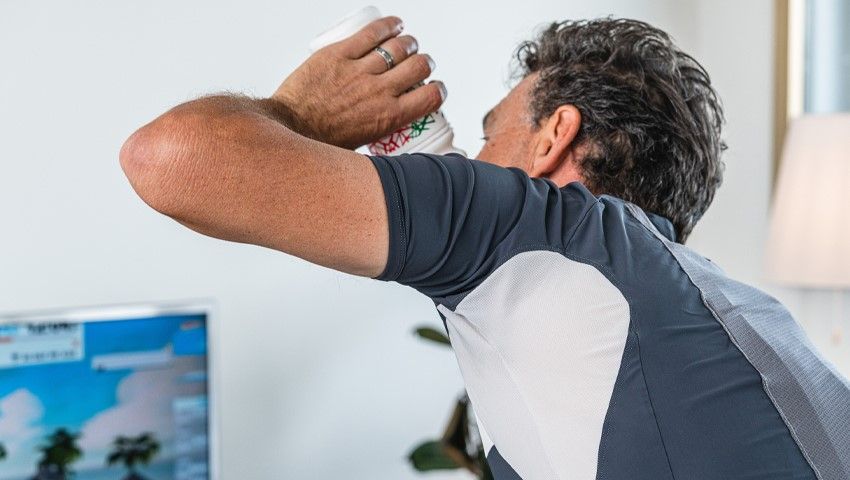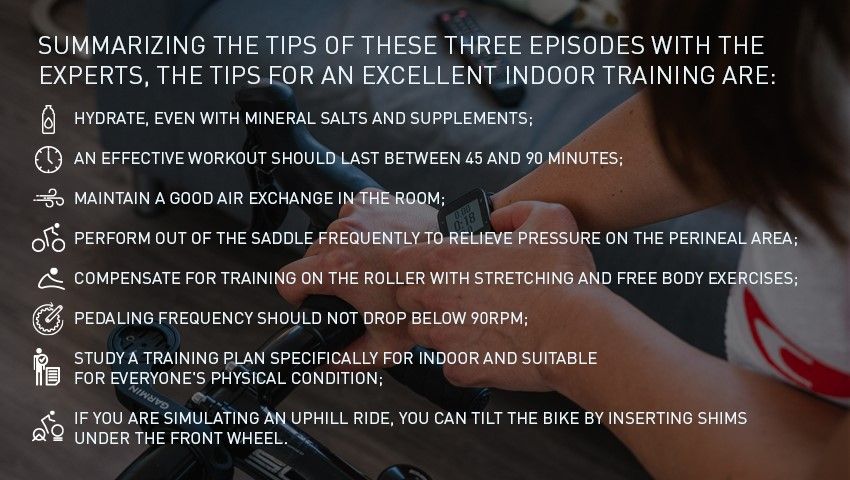TRAINING INDOOR: FOOD AND HEALTH
[ssbp]After exploring the precautions to take during indoor workouts and reading expert advice for proper training, we now want to delve into another aspect to keep in mind when it comes to health: food and diet. Dr. Antonio Paoli (Department of Biomedical Sciences of the University of Padua) and Dr. Andrea Fusaz, an athletic trainer of the CCC Team and owner of the CTF Lab have answered our questions about how food will best complement indoor training.
There are better times of the day to exercise. For example, some argue that training before breakfast stimulates growth hormone. Is this the real deal?
Dr. Antonio Paoli: While it is true that growth hormone has an undulatory (circadian) trend with a physiological peak in the morning, it is also true that training and fasting can increase in aminoacids in the blood and thus stimulate the growth hormones. There is no scientific evidence that a workout done in the morning on a fasted state brings hormonal benefits. Thus, there are no definitive data on the effect of fasting training on growth hormones. Regarding fasted training and body composition, however, not all studies agree: some studies suggest that training after breakfast then increases the metabolism at rest, while others indicate that fasted training instead improves the ability to oxidize fat.
Is a specific diet recommended for indoor training?Also what can be done to compensate for the significant loss of fluids and muscles train?
AP: It is not possible to talk about a specific diet because the energy expenditure is the same. What clearly changes is the appearance of sweating and therefore of hydration. As everyone has had the opportunity to experience while pedaling indoors, sweating is often more than cycling outdoors. Hydration and the type of drink used must be considered.

Can training on the rollers generate osteoarticular problems?
Dr. Andrea Fusaz: At the biomechanical level, direct drive rollers, which is direct drive from the sprocket set to the roller motor, have now become so similar to the road that they do not generate any type of tendon-muscle problem. It’s a different story when it comes to old school rollers, or trainers that use the resistance of the rear wheel. In this case, the inertia of the rollers is not at all similar to that given by the bike-wheel system of a road pedaling and the biomechanics of the pedaling is upset. Often, this poses a danger for the knees which, due to a musculature that is not coordinated with the specific action, are subjected to abnormal tension with the consequent risk of inflammation. Precisely for this reason I advise those with this type of rollers to train at pedaling frequencies that do not fall below 90 rpm.
Summarizing the tips of these three episodes with the experts, the tips for an excellent indoor training are:
- Hydrate, even with mineral salts and supplements;
- An effective workout should last between 45 and 90 minutes;
- Maintain a good air exchange in the room;
- Perform out of the saddle frequently to relieve pressure on the perineal area;
- Compensate for training on the roller with stretching and free body exercises;
- Pedaling frequency should not drop below 90 rpm;
- Study a training plan specifically for indoor and suitable for everyone’s physical condition;
- If you are simulating an uphill ride, you can tilt the bike by inserting shims under the front wheel
Like all cycling disciplines, indoor training also has its peculiarities and it is important not to leave anything to chance. If you are a beginner and want to try your hand at indoor cycling, listen to professionals who will show you the most suitable path to gain physical fitness without encountering problems. In addition, a suitable pad, light and with breathable materials, will help you face new challenges.
